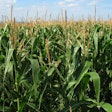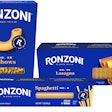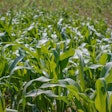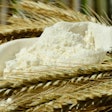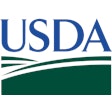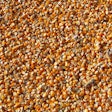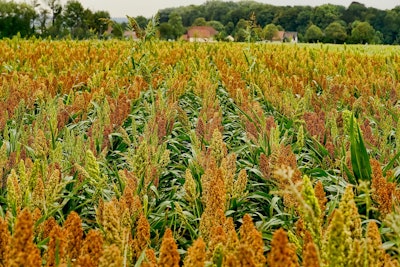
The U.S. Grains Council (USGC) released its 2023/24 Sorghum Quality Report on April 26 and for the fifth consecutive year, U.S. sorghum was, on average, graded above the necessary requirements for U.S. No. 1 certification.
The annual report, funded through the U.S. Department of Agriculture’s Foreign Agricultural Service Agricultural Trade Promotion (USDA-FAS) program and the United Sorghum Checkoff Program (USCP), provides international customers and other interested parties accurate, unbiased information about the 2023/24 U.S. sorghum crop.
Methodology
Data was drawn from 104 samples collected from 15 participating elevators and one participating farmer in the central and southern regions of the U.S., which represents nearly 100 percent of all U.S. sorghum exports, between July 24, 2023, and Mar. 15, 2024.
The samples were analyzed by the Amarillo Grain Exchange and the Cereal Quality Lab at Texas A&M University, where scientists calculated averages and standard deviations for each quality factor tested and reported results for the U.S. aggregate.
Quality test results
Total damage is the percentage of kernels and pieces of kernels that are damaged in some way and test results came in at 0.0% damage in the aggregate.
A representative working sample of 15 grams of BNFM (broken kernels and foreign material) -free sorghum was visually examined by a properly trained individual for the content of damaged kernels.
Types of damage include germ-damaged kernels, ground- or weather-damaged kernels, diseased kernels, frost-damaged kernels, heat-damaged kernels, insect-bored kernels, mold-damaged kernels (surface or internal), mold-like substance, purple-pigment/damaged kernels and sprout-damaged kernels.
Total damage is reported as the weight percentage of the working sample that is total damaged grain. The average result of 0.0% is the same as 2022/2023 but lower than the 4YA (0.1%) and the maximum for U.S. No. 1 grade (2.0%).
Kernel diameter and hardness — indicators of maturity and resiliency — were also similar to last year. Additionally, tannins were absent from the sorghum samples for the fifth year in a row.
Protein is an important quality characteristic for poultry and livestock feeding, as it supplies essential sulfur-containing amino acids and improves the feed conversion efficiency. Results were reported on a dry basis.
The average for the 2023/2024 samples were 11.1% — similar to 2022/2023 and the 4YA (both 11.0%). The standard deviation was 0.79% — higher than 2022/2023 (0.64%) and similar to the 4YA (0.77%).
“The Council’s annual sorghum quality reports is an extremely important tool for defending our existing export markets and gaining market share in new ones because it shows exactly what to expect from U.S. product year-by-year,” said Brent Boydston, USGC chairman. “The report is always well-received by everyone along the sorghum value chain and the Council is proud to have offered it for the last half-decade and for many years in the future.”





